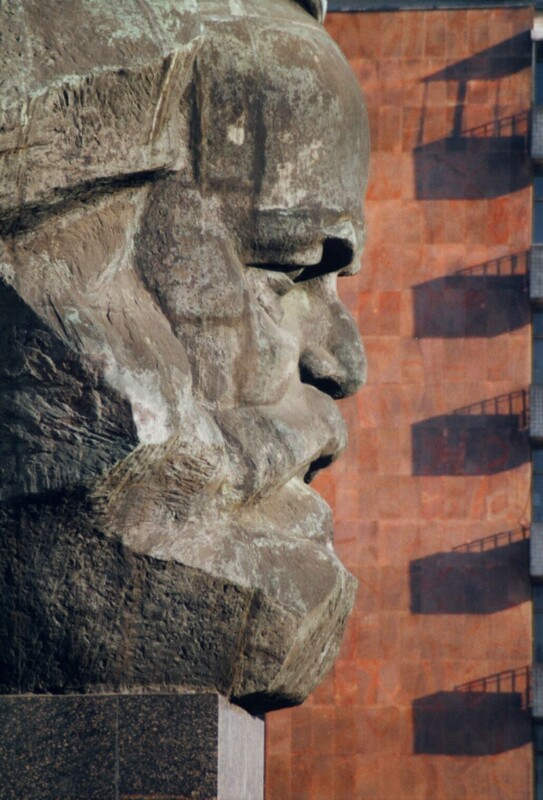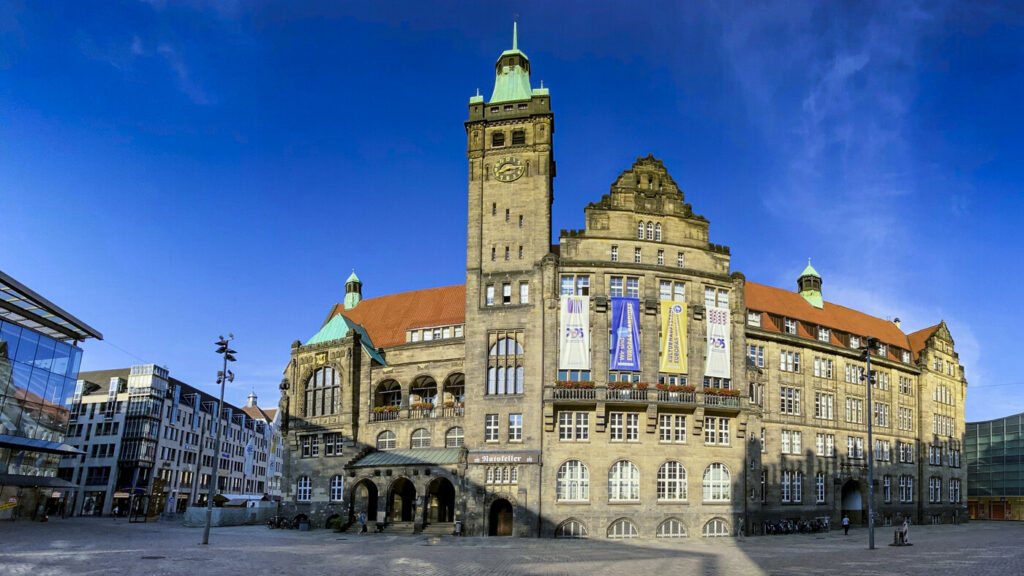
Chemnitz ist eine 800 Jahre alte Stadt mitten im Herzen von Sachsen, am Tor zum wunderschönen Erzgebirge und nahe der Grenze zur Tschechischen Republik. Der Name rührt vom sorbischen Wort kamje (der Stein) her und bedeutet so viel wie Steinbach oder steiniger Bach. Wer die Chemnitz, den durch die Stadt fließenden gleichnamigen Fluss, außerhalb des Stadtgebietes sieht, weiß, dass „Steine“ hier durchaus mal die Größe von Lieferwagen haben können.
Knapp 250.000 Menschen leben hier. Davon studieren etwa 9.000 an der Technischen Universität Chemnitz. Chemnitz blickt auf eine aufregende, durch Höhen und Tiefen gekennzeichnete Geschichte.
Chemnitz gilt als das Tor zum Erzgebirge. Von dort kam auch der ursprüngliche Wohlstand: Eisen- und Silbererze und später Uran wurden entweder in Chemnitz verarbeitet oder über Chemnitz in die Welt transportiert. Im 19. Jahrhundert florierte hier vor allem die Textilindustrie, später kam der Automobilbau hinzu. So wurde Chemnitz einst wohlhabend. Und obwohl der Zweite Weltkrieg und der sozialistische Städtebau einiges von der alten Schönheit genommen haben, gibt es doch noch so manches zu sehen.
Chemnitz ist Kulturhauptstadt Europas 2025!

Erblüht in der Zeit der Industrialisierung und dadurch bekannt als „Sächsisches Manchester“, wuchs Chemnitz schnell zur Großstadt und war Anfang des 20. Jahrhunderts reichste Stadt Deutschlands. Unternehmergeist, gepaart mit Chemnitzer Machermentalität, führte zu innovativen Erfindungen und modernen Errungenschaften. Gleichzeitig sorgten die Unternehmer auch für die kulturelle Blüte der Stadt. So entstanden in diesen Zeiten Kulturschätze, wie die Kunstsammlungen Chemnitz, beeindruckende Gründerzeitviertel und Villen, die die Stadt bis heute prägen.
Im Verlauf der Jahre erfand sich die Stadt einige Male neu: Aus Chemnitz wurde Karl-Marx-Stadt, die DDR-Zeit prägte die Stadt mit Plattenbauten, Garagen und Kleingärten, tausende Menschen verließen die Stadt in der Wendezeit, aus Karl-Marx-Stadt wurde wieder Chemnitz und eines blieb: eine ganz eigene Kultur. Eine Kultur, geprägt vom Machertum.
Die Macherinnen und Macher stehen auch im Rahmen der Kulturhauptstadt Europas 2025 im Fokus und werden ausgehend von der Geschichte den Faden in die Zukunft spinnen. Unter dem Motto „C the Unseen“ werden dann unentdeckte Orte erlebbar und das Unsichtbare sichtbar gemacht.
Entdecken Sie diese Orte in Chemnitz genauso wie die renommierten Kunsthäuser, das Fünf-Sparten-Theater, die Industriekultur, die Schlösser und Burgen der Region sowie erste Kunstwerke des Purple Path und lernen Sie die Macherinnen und Macher persönlich kennen.
